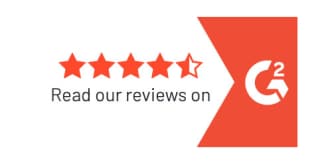401(k) plans are created with fairness in mind. They are intended to provide a benefit that is valuable to all employees who choose to participate. To ensure this fairness, the ERISA regulations specify best practices in establishing a 401(k) plan.
Each 401(k) plan is required to perform annual nondiscrimination tests, and report on the details of the plan operation.
The 4 Primary Noncompliance Tests
Test 1: ADP/ACP (Actual Deferral & Actual Contribution Percentage) Tests
To run this test, employees are divided into two groups: highly-compensated employees (HCEs) and non-highly compensated employees (non-HCEs). The IRS defines an income level that qualifies one to be an HCE, and that amount may change each year. Ownership can also qualify one to be an HCE.
If the actual deferral percentage (ADP) of the HCE group is more than a certain percentage over that of the ADP for the non-HCE group, the plan will fail the test. The ACP test works the same way, but looks at the employer’s matching contributions.
Employers who fail this test are typically required to refund excess contributions back to the HCEs or make a contribution to employees, which can be costly, embarrassing, and frustrating.
Test 2: Top-Heavy Test
For this test, employees are divided into two different groups: key employees (owners and executives) and non-key employees.
At the end of the plan year, the total dollar balance is evaluated. If more than 60% of the money belongs to key employees, the plan fails this test.
To correct the failure, employers are typically required to make extra contributions to non-key employees up to 3% of their compensation, which can be expensive.
Test 3: Compensation Test
This test looks at how much actual compensation is allowed to be contributed to the retirement plan. Since many compensation plans include commissions, bonuses, tips and so forth, which can be a substantial portion of an employee’s total pay, the rules within the plan about allowing contributions based on these types of pay need to be fair.
As a rule of thumb, if the average amount of compensation excluded is 3% or more, the plan will fail this test.
Test 4: Coverage Test
This plan looks at employees who are excluded from participation in the plan. Currently, employers cannot exclude employees based on their work status (full-time or part-time) but they can exclude based on job title. For example, interns or temporary workers are often excluded.
If a large number of employees who would otherwise be eligible are excluded, the plan will fail this test. This test requires that at least 70% of eligible employees are participating. (Ineligible employees are not included in the test.)
Failing this test usually requires the employer to make amendments to the plan document to adjust which employees can be included. This can be quite time-consuming and potentially costly.
Two Helps for Testing Issues
Small businesses often run into problems with these tests. When employee head count is low, even a few highly-compensated or key employees can throw the balance off easily. To help small businesses avoid costly problems, we offer these two solutions.
Solution 1: Automated Testing
Most businesses hire a third-party administrator (TPA) to do this testing once a year. Because 401GO tests are performed by technology rather than an auditor, it can run continuously and watch for problems throughout the year.
If problems are found early, the employer has time to correct them while they are still small. They could potentially avoid costly rectification at the end of the year by keeping a watchful eye all year long.
Solution 2: Safe Harbor Plan Design
We often recommend safe harbor plans for small businesses. They exempt businesses with some of the required testing, saving them time, money and headaches. If our automated system determines that your plan is likely to run into problems, it will recommend a safe harbor plan, although you are not required to use it.
Tax Reporting
All 401(k) plans are required to file a form 5500 each year. This is a tax reporting document that gives the IRS information about benefit plans, and helps ensure the operations and finances of these plans are being managed properly.
This includes details such as:
- Number of eligible employees
- Number of employees participating
- Amount of employer contributions
- Earnings and losses
- Rollovers into the plan
- Distributions out of the plan
- Insurance information
- Service provider information
This document is quite involved and if the filing requirements aren’t met, the employer could receive hefty fines or penalties. The IRS may charge $250 per day, and ERISA may charge $2259 per day for late filing.
Other forms may also be required.
One Help for Report Requirements
Because the document is quite involved and complicated, most businesses feel compelled to hire a qualified benefits specialist to complete the preparation on their behalf. Most of these specialists will want the plan sponsor to sign the document, verifying its accuracy before filing.
This can be a real problem for plan sponsors who aren’t ERISA specialists and who may not fully understand what is being reported. Although the plan sponsor has ultimate responsibility for the plan, they may rightly feel uneasy about the contents of the form.
At 401GO, our technology completes this form 5500 on your behalf. If any red flags are identified, we work to address them quickly. And further, we will sign and file the form on your behalf. You can feel safe knowing that we will take responsibility for the contents of the form, and that our automation will ensure it is completed and filed on time.
Consequences of Test Failure
For small businesses, 401(k) test failure is surprisingly common, with over a quarter of non-safe-harbor plans failing the ADP test, and a whopping 45% failing the top heavy test. Failing a test probably won’t be devastating, but correcting failures properly can be difficult and costly.
It’s crucial for small companies to choose a plan design up front that supports their individual circumstances. And, if a failure should happen, communicate with the 401(k) provider about performing plan testing and keep a watchful eye on test correction dates.
To limit your risk of test failure, use 401GO as your retirement plan provider. Our plan design suggestions and automated ongoing testing can save your business time, money and hassles.



